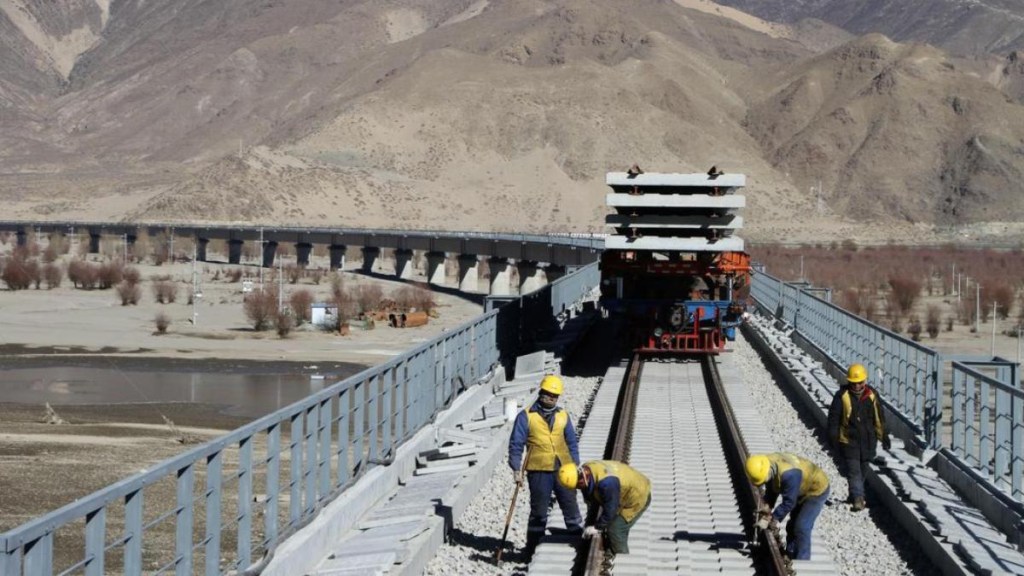India and China, two Asian giants, have long competed for influence in the South Asian region. In recent years, both nations have shown a keen interest in establishing rail links with Nepal, a landlocked country nestled between them. There are many possibilities and implications of a potential rail connectivity between India, China, and Nepal and can have a far-reaching strategic, economic, and geopolitical impact.
The Race to reach Kathmandu
India has been working on a plan to build a 141-kilometer railway line between Raxaul, India, and Kathmandu, Nepal. The line would be part of a larger project to connect India’s rail network with the rest of South Asia. China has also been working on a plan to build a 75-kilometer railway line between Kerung, China, and Kathmandu, Nepal. The line would be part of China’s Belt and Road Initiative, a massive infrastructure project that is aimed at connecting China to other parts of Asia and beyond. The construction of rail links between India and Nepal could have a number of benefits. It would make it easier for people and goods to travel between the two countries, and it could also boost economic development in Nepal.
China’s Rail Link from Tibet to Kathmandu
China’s vision of a railway connecting Tibet and Kathmandu is a significant undertaking due to the challenging terrain of the Himalayas. The proposed rail link would involve constructing tunnels, bridges, and tracks at high altitudes, making it one of the world’s toughest railways. If realized, this project could provide China with an alternate trade route to the Indian Ocean and bolster its influence in the region. Additionally, it would enhance Nepal’s connectivity with China, opening up new economic opportunities and facilitating people-to-people exchanges.
India’s Rail Link with Nepal
India has been actively working on improving rail connectivity with Nepal. The successful operation of the passenger railway service between Bihar and Nepal has already proven fruitful, completing a year of profitable operations. This service has enhanced cross-border mobility, facilitating trade and tourism between the two countries. With further development and expansion, an interconnected rail network could potentially extend from India, traverse Nepal, and even reach the Chinese border. Such connectivity would stimulate economic growth, strengthen bilateral ties, and promote regional integration.
Geopolitical Implications
The race for rail connectivity between India and China through Nepal carries significant geopolitical implications. It serves as a demonstration of influence and soft power projection in the region. China’s efforts to build rail links with Nepal align with its ambitious Belt and Road Initiative, aimed at expanding its economic and political influence globally. India, on the other hand, seeks to counterbalance China’s growing influence and maintain its strategic partnership with Nepal. The establishment of rail links could provide both nations with a direct stake in Nepal’s economic development and political stability, thus shaping the geopolitical landscape of South Asia.
Potential Benefits and Challenges
The construction of rail links between India and Nepal is a complex and challenging project. The terrain in Nepal is mountainous and difficult to build on, and the cost of construction is likely to be high. However, the potential benefits of the project are also significant. The construction of rail links could make it easier for people and goods to travel between India and Nepal, and it could also boost economic development in Nepal. Rail connectivity between India, China, and Nepal holds substantial potential for economic growth, trade facilitation, and cultural exchange. It would enhance connectivity, improve logistics, and reduce transportation costs, benefiting all three nations. However, challenges such as complex terrain, environmental concerns, and the need for significant investments pose hurdles to the realization of these projects. Additionally, the geopolitical dynamics of the region, including historical tensions and strategic rivalries, may influence the progress and outcomes of rail connectivity initiatives.
The potential rail connectivity between India, China, and Nepal via various proposed projects holds promise for regional integration and economic development. While both nations compete for influence, the ultimate goal should be to foster cooperation, stability, and sustainable growth in the region. The realization of these rail links will depend on addressing technical challenges, ensuring environmental sustainability, and navigating the complex geopolitical dynamics. Ultimately, a well-connected South Asia could unlock vast opportunities and foster closer ties between nations, benefiting millions of people across the region.

